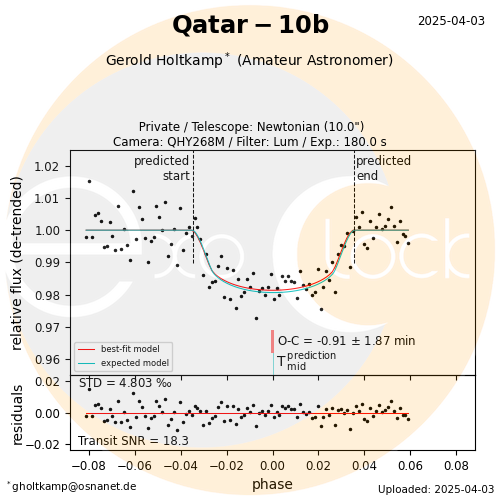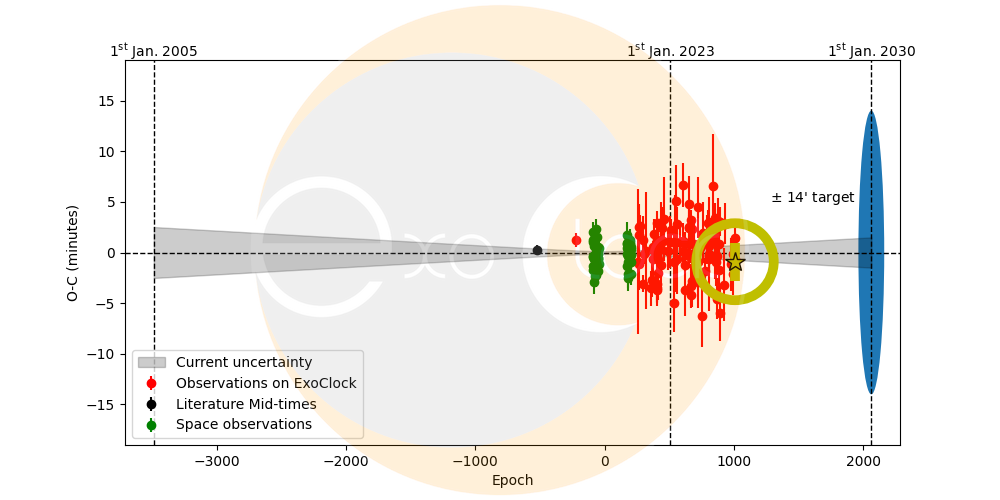Contribution by Dr. Gerold Holtkamp, June 2025
The measurements were taken from 21:55 UTC on April 2, 2025, to 3:27 UTC on April 3, 2025, in Osnabrück, Sonnenhügel. The moon was 27% illuminated and 64° distant. It set on April 3, 2025, at 0:15 UTC.
The measurement technique used:
Telescope: Skywatcher Newton 250/1200 mm
Mount: Skywatcher AZ-EQ6
Filter: Luminanz (Antlia)
Camera: QHY268M with gain 60, offset 20, chip temperature -10° C
Guiding: Skywatcher Guidescope Evoguide 50 ED with camera ZWO ASI120mm
NINA was used for camera and mount control.

The present measurement and the subsequent evaluation with the hops software of the Exoclock-Project resulted in:
Rp/Rs = 0.1241 +/- 0.0034 (expected 0.1265 +/- 0.001) *
-> Rp = 0.1241 x 942,844 = 117,007 +/- 3,206 km [1]
The exoplanet Qatar-10b is significantly larger than Jupiter (radius = 69,911 km). The system is 1,823 light-years from Earth.

The value of the temporal center of the transit, which is important for the Exoclock project and is expressed as the difference between the observed and the expected value, is O-C = -0.91 +/- 1.87 minutes**, which is within the error limits of the expected value.
The measurement of the transit light curve of the exoplanet Qatar-8b was published on the Exoclock project website. [2] The author also provided another measurement of the transit light curve of Qatar-10b from March 5, 2025. [3] There is also a measurement on kosmos-os.de by Thomas Grunge from October 3, 2022. [4]
____________________________________________________________________________
* [Rp = Rplanet, Rs = Rstar]
If the star's radius is known, the planet's radius is determined directly from the dip in the light curve. (see also https://kosmos-os.de/messung-der-transitlichtkurven-der-exoplaneten-wasp-84b-und-kps-1b-am-7-und-8-maerz-2024)
** [O = Observed, C = Calculated]
[1]
Data on the star system and the exoplanet at
https://exoplanetarchive.ipac.caltech.edu/overview/qatar-10
The radius of the parent star was taken as 1.354 +0.039/-0.020 (Gaia DR2) x the radius of the Sun. The radius of the Sun was assumed to be 696,340 km. The parent star therefore has a radius of 942,844 km.
[2]
https://www.exoclock.space/database/observations/Qatar-10b_5605_2025-04-03_Gerold_1561_Lum/
[3]
https://kosmos-os.de/messung-der-transitlichtkurve-des-exoplaneten-qatar-10b-am-5-6-maerz-2025